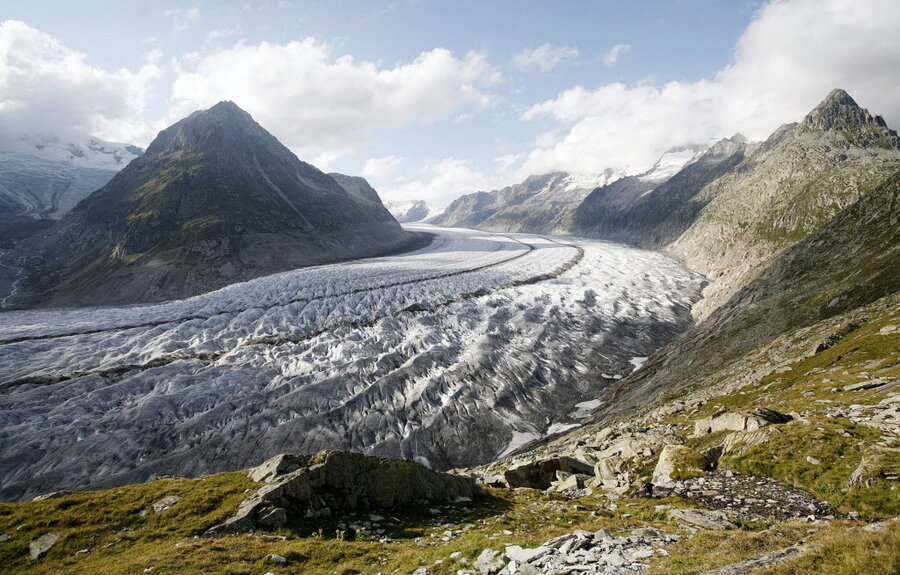Soot resolves paradox in climate science, scientists say
The Industrial Revolution could be to blame for an Alpine glacial retreat that is inconsistent with the Little Ice Age conditions during which it took place, according to a new paper published in the journal Proceedings of the National Academy of Sciences.
A team of researchers has now pinned the perplexing glacial retreat on soot buoyed into the atmosphere as Europe chugged into its Industrial Age. The find offers a possible solution to a paradox in climate science: how could the Alpine glacier have receded when the European environment, at the time cold and wet, was primed for glacial expansion?
That enigma begins around 1860 in the snow-caked Alps. At about that time, the glaciers that gloss the European mountain range began to roll back at an average of nearly 0.6 miles each year, reaching the smallest range since about 500 years prior.
“This was an abrupt change,” says Thomas Painter, a researcher at NASA's Jet Propulsion Laboratory and the lead scientist on the paper.
But that glacial change was not mirrored in any such change in alpine conditions: “There was no abrupt change in precipitation. And there was no abrupt increase in temperature,” says Dr. Painter.
In fact, climate records suggest that the glaciers across Europe should have been advancing at that time. In 1860, the world was just rolling off what scientists have termed a Little Ice Age, which beginning about 1550 plunked medieval Europe into a cold spell some 300 years long. And it was not until about 1910 that the continent’s climate began to warm enough to suggest glacial shrinkage.
“That left us with what is often called the paradox of the Little Ice Age,” says Painter.
So, how did a glacier recede during an ice age, even if it was just a “little” one?
“There really hadn't been an adequate explanation for the paradox,” says Mark Flanner, a professor at the University of Michigan and a co-author on the paper, in an email interview. “Previous studies had assumed that the temperature records were off, for example, or assumed that winter precipitation had decreased around the time the glaciers began to retreat.”
To solve the problem without revising the numbers, scientists factored in one more data point: soot, the Dickensian variable that Painter has fingered in previous research as exacerbating mountain snowmelt in Colorado.
In 1860, about two decades after Charles Dickens published 'Oliver Twist' and profiled a soot-cloaked England, Europe was wrapping up almost a hundred years of industrialization, a period that had studded the continent with smoke-spewing factories and riddled it with polluting railroads. Perhaps, the scientists hypothesized, those changes in the way that Europeans worked, traveled, and lived were heralding other environmental changes at the continent’s highest altitudes.
The team of researchers found that ice core samples from the Alps’ glaciers contained black carbon depositions dating to the same period that the ice was melting – as well as to the same period that Europe’s new technologies were lofting soot into the atmosphere. The scientists then constructed models to gauge the influence of black carbon, a sunlight-absorbing particle, on the glacier’s behavior. The results show that the soot would have warmed the ice it settled on enough to melt the glacier, the scientists said.
Still, the solution is just a hypothesis, since the glacial historical record is inexact. Solving a paradox is difficult, and it is even more so when it is a historical one, the scientists say.
“Unfortunately, when we ‘look’ back in time like this, we can't simply pose a hypothesis and unequivocally prove or disprove it,” said Waleed Abdalati, a professor at the University of Colorado, Boulder, and a co-author on the paper, in an email interview.
Even so, “we can't explain the melt any other way,” he added. “The mechanism is very plausible, and the physics of the model and the associated results are very compelling.”







